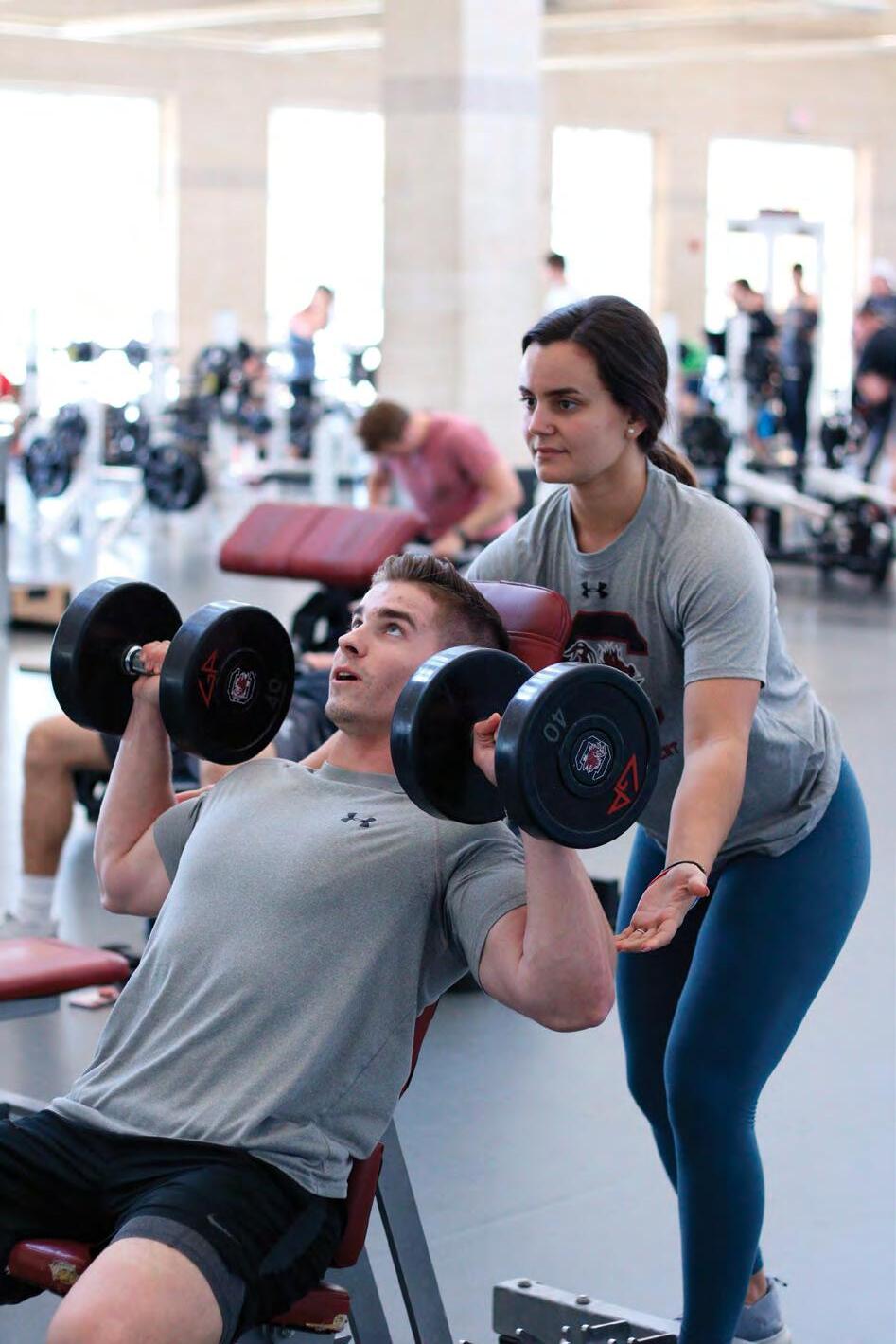UNTOLD LEGACY
THE STORY OF USC’S FIRST BLACK FOOTBALL PLAYERS
A NIGHT BEHIND THE BAR A LOOK AT LIFE AS A STUDENT BARTENDER
COFFEE FOR ALL YOUR NEW FAVORITE DAYTIME SPOT IN FIVE POINTS

UNTOLD LEGACY
THE STORY OF USC’S FIRST BLACK FOOTBALL PLAYERS
A NIGHT BEHIND THE BAR A LOOK AT LIFE AS A STUDENT BARTENDER
COFFEE FOR ALL YOUR NEW FAVORITE DAYTIME SPOT IN FIVE POINTS

Top of Carolina, located on the 18th floor of the Capstone building, is taking reservations for Friday’s BBQ lunch and Sunday’s brunch.

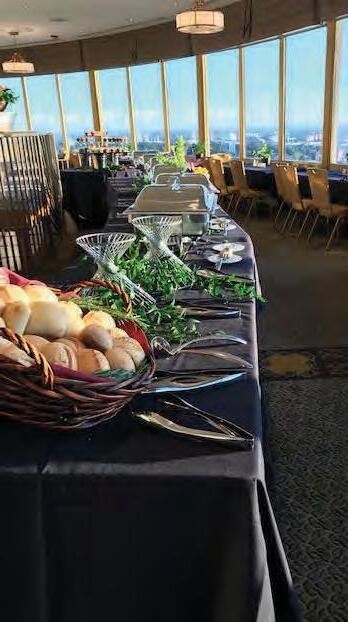
Top of Carolina is the unrivaled Columbia dining experience. As the only 360°rotating restaurant in South Carolina, you'll enjoy a birds eye view of this beautiful city plus delectable cuisine and attentive service.


Top of Carolina is open Fridays for lunch from 11:00am–1:30pm and Sunday for brunch from 10:30am–1:30pm.
Make reservations via Yelp.com by searching Top of Carolina.
STUDENT MAGAZINE OF THE UNIVERSITY OF SOUTH CAROLINA
EDITOR-IN-CHIEF
CREATIVE DIRECTOR MANAGING EDITOR
PRINT ARTICLES EDITOR Liz Smith
DIGITAL ARTICLES EDITOR Hallie Hayes
ASSISTANT ARTICLES EDITOR Caroline Fairey
STAFF WRITER Dabriel Zimmerman
STAFF WRITER Cassidy Spencer
STAFF WRITER Nicole Kitchens
STAFF WRITER Jessica Fields
STAFF WRITER Madison Bridges
STAFF WRITER Henry Bolin
COPY CHIEF Cassidy Spencer
ART DIRECTOR Emily Schoonover
STAFF DESIGNER Olivia Griffin
STAFF DESIGNER Meagan Horres
STAFF DESIGNER Alizajane Hicks
PRINT PHOTO EDITOR Mark Maddaloni
DIGITAL PHOTO EDITOR Coleman Rojahn
ASSISTANT PRINT PHOTO EDITOR Zhané Bradley
PRINT PHOTOGRAPHER Nancy Sterrett
PRINT PHOTOGRAPHER Alexander Wyatt
PRINT STYLE EDITOR Parker Blackburn
ASSISTANT STYLE EDITOR Malachi Harris
ASSISTANT STYLE EDITOR Vittoria Gallello
MULTIMEDIA DIRECTOR Megan Edgemond
SOCIAL MEDIA COORDINATOR Jordan Postal
MARY-BRYANT CHARLES MEREDITH PRICE
CHRISTIAN COMPTON
DIRECTOR OF STUDENT MEDIA
Sarah Scarborough
ASSISTANT DIRECTOR OF STUDENT MEDIA
Sydney Patterson
ADVERTISING MANAGER
Patrick DiDomenico
ART DIRECTOR
Grace Steptoe
FACULTY ADVISOR
Scott Farrand
CREATIVE SERVICES
Emily Schoonover
Meagen Sigmon
Julia Linthicum
Molly Collins
Meredith Price
ADVERTISING REPRESENTATIVES
Lauren Bushman
Barron Coleman
Brittany Harrelson
Glenn Johnson
Emily Johnson
Silvia Ramirez
Advertising: (803) 777-3018
To contact G&B, email sagandbe@mailbox.sc.edu or visit www.gandbmagazine.com
Garnet & Black magazine is produced four times a year by students of the University of South Carolina and is distributed free to members of the university community. All editors and staff members can be contacted at (803) 777-1149. The office is located in Russell House room 339.
EDITOR-IN-CHIEF sagandbe@mailbox.sc.edu

CREATIVE DIRECTOR gandbart@gmail.com

ARTICLES EDITOR gandbwriting@gmail.com
DIGITAL MEDIA EDITOR gandwriting@gmail.com


PHOTO EDITOR gandbphoto@gmail.com
STYLE EDITOR gandbmoda@gmail.com
PUBLIC RELATIONS DIRECTOR gandbpublicrelations@gmail.com


It happened, guys. I got hopelessly addicted to TikTok.
Never have I encountered something that can just swallow hours and hours away like they’re nothing, leaving me wondering how it got to be 2 a.m so quickly. It’s so easy to slip into, so easy for the site’s algorithm to quickly piece together a profile of what content you want to see.
It’s such a nice escape, especially considering the state of things. I’m writing this the Friday after the Iowa Caucuses, the State of the Union, the end of the impeachment trial, and the disaster that was Pilot Pete deciding to keep Victoria F. on as a contestant on The Bachelor, but I know that statement will still apply once you get a copy of this in hand because that’s just how it is these days.
Staying caught up and focused on current events is something I take very seriously. I’m subscribed to daily news briefings from several outlets and I usually don’t get out of bed without scrolling through Twitter to see what’s going on. But lately, they’ve been replaced with scrolling through TikTok. Because lately it’s been hard to do any of those other things without sinking into either hopelessness or cold cynicism.
There’s a Twitter post I’ve been thinking about a lot lately that talks about how it feels morally wrong to look away from issues affecting so many people, but also spiritually debilitating to keep watching. I’ve felt like that a lot this week, trying to answer the question of how to find a balance. I think the answer is that we always have to be asking the question. Always have to be pushing for ways to become not only more knowledgeable, but more empathetic. That’s our goal here at this magazine. To guide you all in the pursuit for that balance, to arm you with the truth of the world we live in and the energy to push forward and make it a better place.
Never stop questioning, never stop hoping, and be sure to give me a follow on TikTok.


 BY CASSIDY SPENCER • PHOTOS BY ALEX WYATT DESIGN BY OLIVIA GRIFFIN
BY CASSIDY SPENCER • PHOTOS BY ALEX WYATT DESIGN BY OLIVIA GRIFFIN
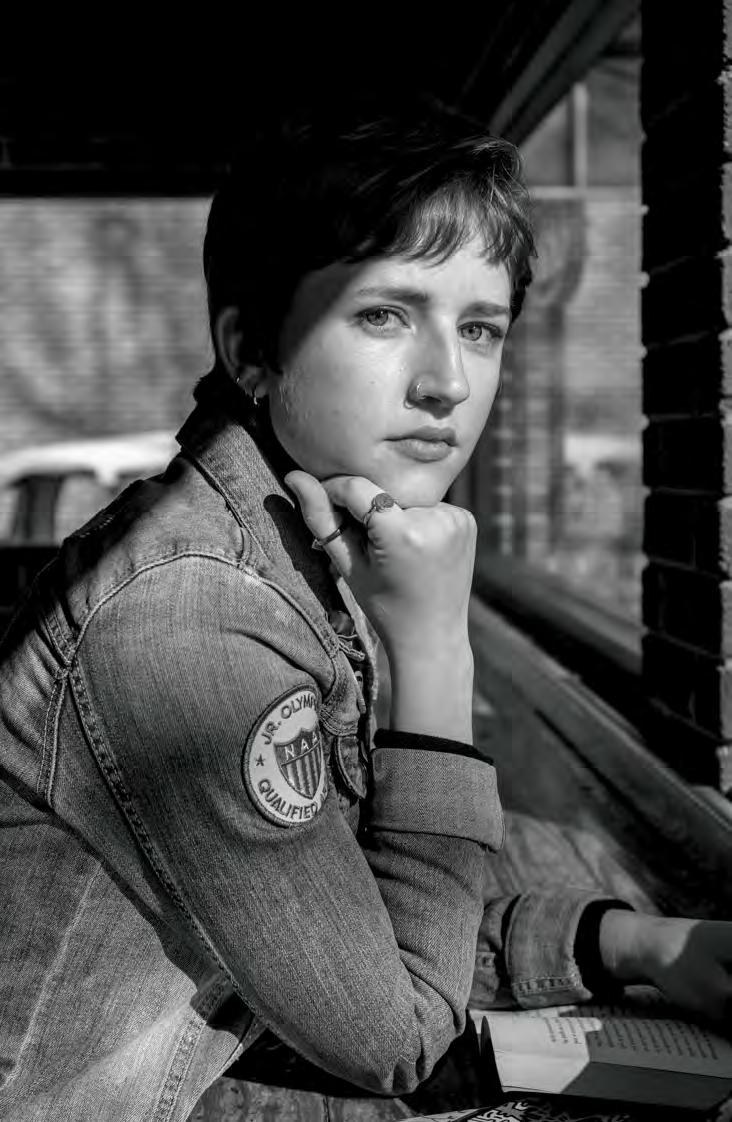
the second semester of my senior year of college and I don’t know what I’m doing after school. While every paper surface in my room and backpack is heavy with maybes, grand ideas and hopes and options, I have no set plan. There is no job or place that has beckoned me practically, convincingly enough to stick.
It feels like from where I sit, I am conducting a constant unintentional census, or am accidentally playing a part in some kind of survey; if I reveal my standing to anybody, as the token Senior In College With No Concrete Post-Grad Plans in the room, everyone has a perspective to show me. Almost as if they had been waiting this whole time for somebody to ask— it is a standpoint that everybody is willing to spew— just what should I do? Maybe the people around me have found it such a fun playing space because it’s an incredibly high-stakes query, with virtually no impact on their own universe. My stakes.
At any rate, I appreciate any passerby or loved one who has peered into the chaos to offer their own two cents. How lovely if I could finance my own life or education on such pithy funds. Little did the general public know (and little did I also know in the moment) that I was collecting data. Here, the findings of my accidental research:

I am sitting on the back porch of my childhood home in Jacksonville within the gentle tension of impending Thanksgiving dinner. I’d come out here just to wait out the turkey smoking in my dad’s new grill, exploring that idea we all seem to harbor that a watched pot will in fact boil faster, when my grandad squeaks onto the wicker bar stool next to me and shakes me from my turkey reverie, saying “So I understand that this is your last year of school, then?”
I respond with a small smile and a small shrug, as noncommittal of a reply as I could pull from myself. A breeze travels through and underscores the conversation with smoking meat. “Well, it’s important to get on that.” He settles in, turning towards the lake facing our backyard, disregarding my slowly shrinking frame. “You’ve got to be on top of it, make sure you reach out to your professors or anybody you’ve worked with in the field— that’s how I got to know people in the industry because I was making appointments, staying alert, getting my name known.” I continue my routine of small smiles and small shrugs to ineffectively communicate that I don’t want to talk about this today.
Charlotte and the Sky

I am speaking to my friend Charlotte outside an event, under a foreboding Columbia Saturday sky, about what the future is and what it isn’t. She talks of alternate lives apart from desk job eternity, of teaching English in Korea, how it is not for the faint of heart, how I am hopefully not faint of heart. I tell her I do not know, but that I don’t think so. She told me that everybody has different priorities and that it doesn’t work when we all try to grade our lives on some two-dimensional scale, and reiterated the golden sentiment: that nobody has it figured out. Nobody has it figured out. Ultimately we decide that nobody can decide for me.
When I inquire about any of her life decisions made, she simply and clearly tells me that she did what her heart wanted. Her eyes flit towards mine and away. If she’d been holding a cigarette she would’ve flicked it at that moment, as she turned on her heel to walk back inside, and tossed to me “I guess you just gotta figure out what that heart wants.” I stood outside as a wave of dense, anticipatory storm wind parted my hair in the other direction. I sweat in yet another outfit just a little too warm and hopeful for a Columbia January.
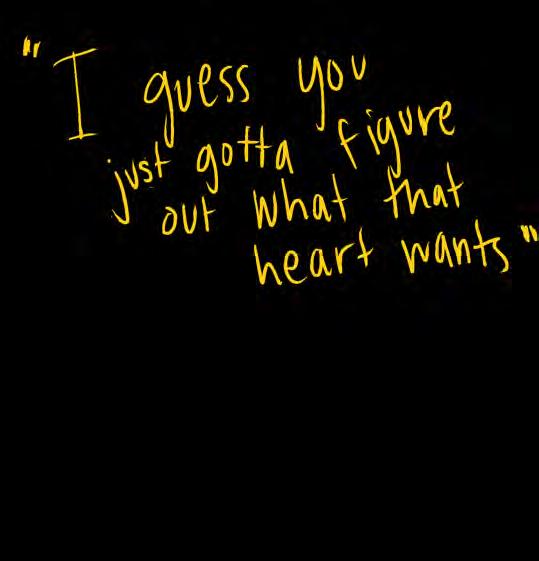
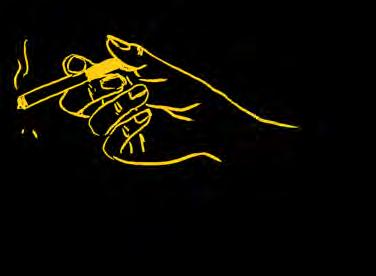
I am saved by charred turkey smell. Charred, charred turkey smell, my god what is that turkey smell. Out of my right periphery my dad opens up the lid of his beloved big green egg embarking on its cardinal mission. I can hardly keep from engaging entirely in this periphery narrative: my father being affronted by a wave of meat-smoke, cursing the smoke, the meat, the egg, waving his spatula frantically, my grandad still fruitlessly talking over the chaos until he notices the turkey narrative too. He sighs, looks at me, then back to the lake, and says, “Just pretend it tastes good even if it doesn’t.”

On the first morning of 2020, I woke up in a ray of sun and the stark realization of the speed of my life. One of those everfamiliar moments of blinking into a new day, realizing and re-forming life and its structure and expectations, shaking off waves of dream and our lost wants and wanderings of sleep. On this particular morning, all of the years leading up to the current one felt as if they were compiled into one long, convoluted dream I was waking from. I was opening into something entirely new. I moved my day forward, I parted the curtains and put on my shoes and boarded my bike with no real intention of where I was going.
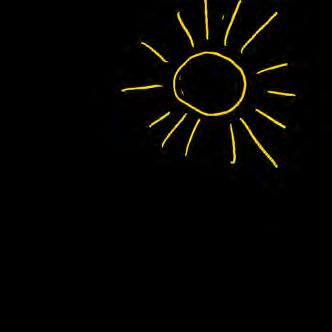
After having landed, semi-confusedly, in the sunny glass box that is Drip on Main St, the owner, Sean, walked up to my table. I’d mentioned to him before that it was about to be my last semester, that my circumstances had been feeling ever-daunting— but as he stood in the sun, in that moment of him in the window, I realized that he was wearing all blue, I realized how very blue and bright it was outside, I realized how safe and encouraged I felt within that sweet new morning sun. How little I had to fear. He did what I think everybody has meant to do, and he encouraged me. Ten minutes or so of pleasant, present bliss— one open and truthful dialogue to precede the unknown. He never went to college, he approached his life in retrospect— and his future in hope— through a lens of exploration and intention. “Nobody has it figured out” he notioned, with a little nod of self-approval and a bright parting warmth, leaving the window to frame the wild beauty.
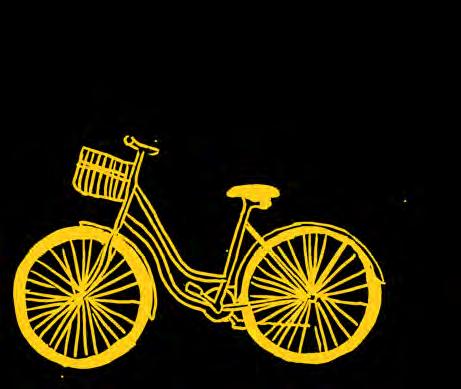

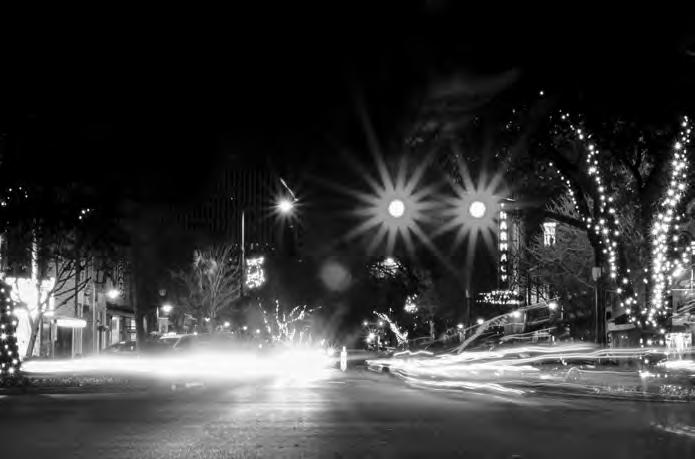
Senior year is a practice in perspective and in expectation. So much of it I am finding is informed by fear, by competition; there is a certain aspect of me espousing this perspective that feels undoubtedly like admitting defeat. I am finding, however, that no talk about the future has given me the insight, joy, or peace that is being presented to any one of us right now in the precious present moment, in the silliness or starkness of the turkey-burning impendingstorm moment. I’m not heeding any reader to ignore future planning— but rather that this entire clumsy and lengthy process of assessing post-school living has reminded me the depth of perspective within every person around me, the importance of asking each other questions and staying for the answer, the importance of watching and enjoying the spontaneous and unforeseen Now. This is not at all what I expected to find, but I am working to douse my expectations anyway.
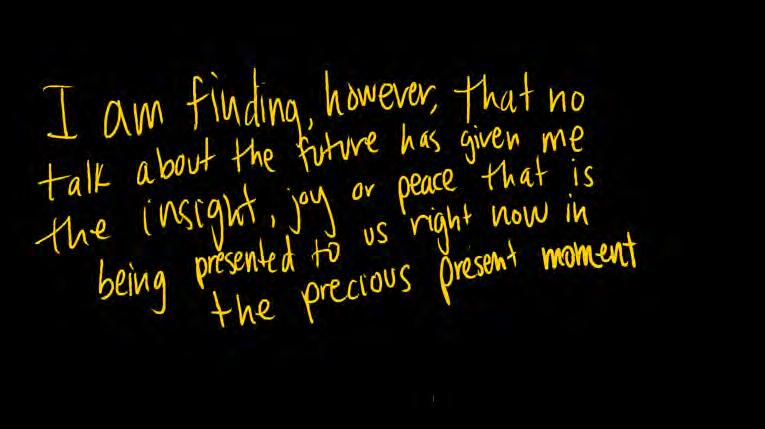
Glimpses into stairwells with flower-painted walls, windows half-overtaken with chunky air conditioners like robbers caught in half-escape, windows with blankets as curtains. Kindred windows that hang open to the world and high-up windows that hang open to the sky and position their tenants alike with the birds, stubborn January christmas trees tall, proud leaves of half-obstructed plants, lights turned off on morning-oriented cafes, shades drawn that have always been drawn. Long, darkened halls, clocks doing clock work, complicated-looking equations abandoned on a whiteboard.

Take a walk at 5 p.m. in the winter, on an overcast day, and see everybody’s inside voices exposed, see curtains still open and lamps turning on inside them, be an agent of the liminal space between day and night and you will see the guard laid down, tiny worlds open and alight to the outside not-night not-day, take a walk at 5 p.m. in the winter and see everybody accidentally lighting each other’s walk home.
BY CASSIDY SPENCER • DESIGN BY EMILY SCHOONOVER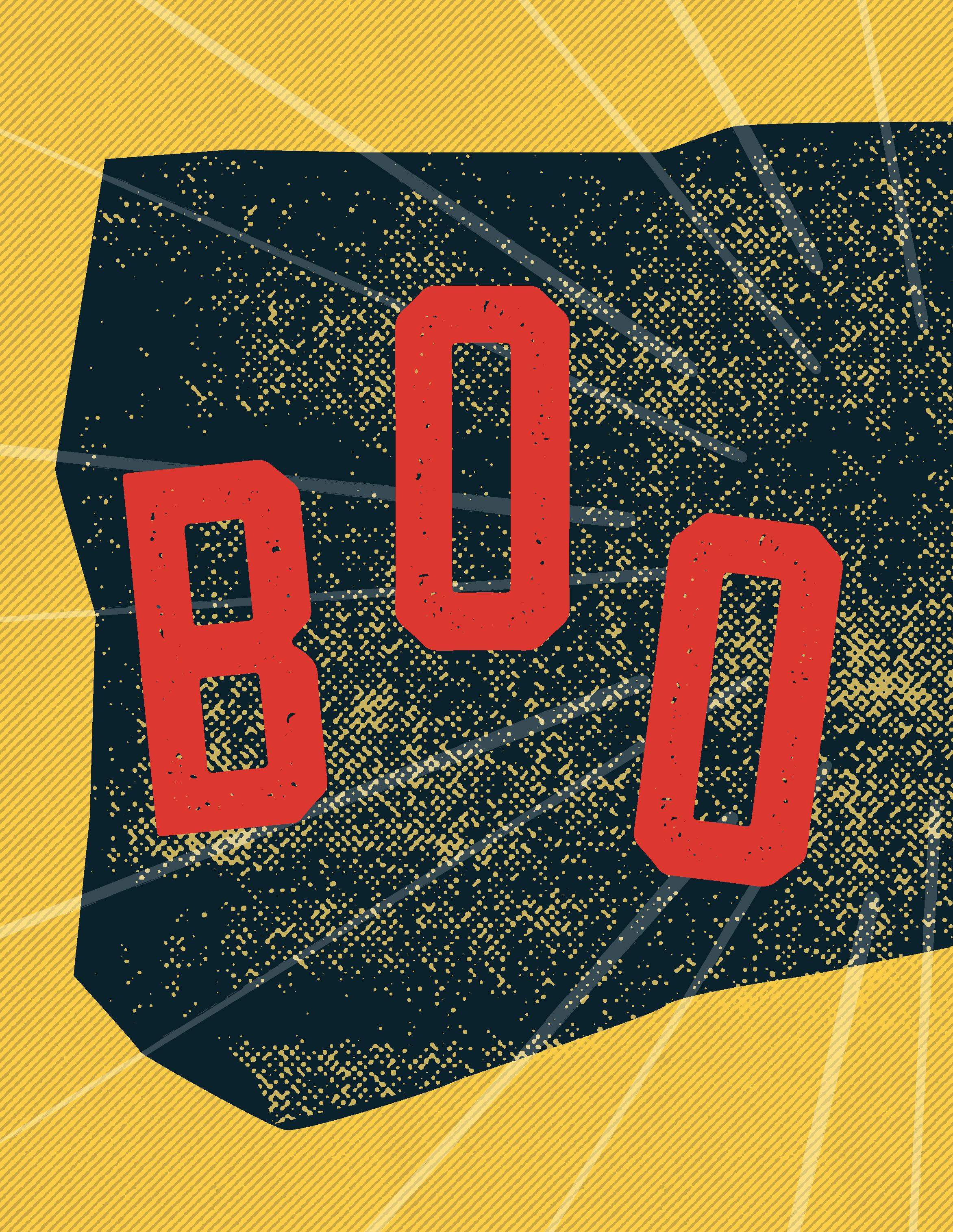
 BY NICOLE KITCHENS • PHOTOS BY NATHAN MARDIN • DESIGN BY MEREDITH PRICE
A CONVERSATION WITH SAUL SEIBERT
BY NICOLE KITCHENS • PHOTOS BY NATHAN MARDIN • DESIGN BY MEREDITH PRICE
A CONVERSATION WITH SAUL SEIBERT
ccording to Gullah culture, humans have both a soul and a spirit; souls leave their human bodies after they die and, granted theirs was a good soul, ascend up to Heaven. The spirit stays to guide and protect the deceased’s family in their time of mourning and need.
A bad spirit, on the other hand, is called a Boo Hag. Using their own sinister brand of witchcraft, they feed off of the souls of living humans. Skinless and bright red, they steal the skin of unsuspecting victims in order to survive, parading unsuspected throughout the world of the living.
Saul Seibert had never heard of the Boo Hag folklore when he moved to South Carolina from New Orleans.
“I was so oblivious,” he says in between cigarette drags. “It’s very Beaufort-oriented, and being from Louisiana I didn’t know anything about it. You can still go down to the Lowcountry and see houses with haint-blue paint on the doors. I liked the mythos around it, and I liked the two words. It was simple, so we really just ran with that for the name.”
With Saul’s macabre, often foreboding songwriting, drummer Scott Tempo’s pounding drums and recent-addition Thomas Hammond on an unearthly style of saxophone (more on that later), the name fits perfectly.

“We just started exploring something Southern centric, and Scott came up with ‘Boo Hag,’” Saul explains. “I’m a bit superstitious, and it’s almost a way of exorcising demons.”
Raised in the French Quarter, Saul is all too familiar with the differences between the eclectic music scene of New Orleans and that of Columbia.
“My parents lived on Bourbon Street, so I grew up in a residential district on like, the 1200
block. You really have no choice, everything is music there. I mean the streets bleed music. So there’s no escaping, I mean, it’s literally the home of jazz and a lot of blues. So the city is just saturated with old spirits, old music. Everywhere you go you’re hearing fantastic jazz, fantastic blues, and it’s set aside. I’ve always said that New Orleans is not really America. It’s its own thing, and it doesn’t get influenced by a lot of other places in America. It’s able to be self contained and it has this sense of purity to it.”
“But Columbia’s fucking weird man,” he laughs. “I’ve lived in the South most of my life, but I’d never lived in ‘South Carolina-South.’”
His shift to Columbia’s scene was difficult, in his own words, finding how to work around a completely different spectrum of local music.
“I was really unimpressed with [the scene]. I literally moved here and had to hit the ground running, taking demo tapes to places like Papa Jazz and immediately started trying to find people [to play music with]. I didn’t see any rock and roll, I didn’t see any of the stuff that’s happening now. There was a lot of singer songwriter stuff going around, a lot of alt-country, and just kind of bar rock. Not any branded bands and artists that were actually going out and trying to leave a nice scar across the face of Columbia, I don’t think there was a lot of that.”
Saul was especially impressed by local group Debbie and the Skanks, and through what he calls an “incestuous move,” was put in contact by group members Joe Buck and Adam Cox with the Skanks’ former drummer, Scotty Tempo.
“We met and really we just had a lot of similar interests in rock and roll, so we met, practiced once, and that’s kind of the beginning, and we haven’t really slowed down since. We’ve been going strong about five years now.”





The band’s newest release, the single “Burial Ground,” was written due to a myriad of Eastern influence rather than Western rock and roll.
“I really just went to the Middle East for inspiration, knowing that the Western influence is already there. Like, I’m an American and I grew up listening to rock and roll. It’s there. I don’t need to study another Stones album, you know?”
The single also finds Seibert and Tempo bringing in Thomas Hammond from King Vulture on saxophone, who adds to the aesthetic and brings more depth to the group’s sound with his unique combination of effects and Arabic scaling patterns.
“Thomas has definitely accentuated the Middle Eastern sound simply by how he plays his saxophone, which isn’t a Middle Eastern instrument, but he was definitely able to take my vision to what I wanted and make it much more than what I thought. He’s a badass.”
2020 will bring about two eventual releases for the band, most notably the Burial Ground album, which they plan to release on vinyl. Burial Ground has been a work in progress since October of last year, culminating with
half of the record being a concept narrative (“There’s a coded story in there that nobody will know about,” Saul laughs) and the other half being straight up, unadulterated rock and roll.
“We thought that the album was going to be done by January or February and then we’d release it. But what’s ended up happening is we’ve decided to keep it in the back and work on it and when it’s done, release it full length on vinyl. So there won’t be any access to it unless it’s vinyl.”
While there’s no set release date or specific plan for Burial Ground as of now, the single itself is ominously accentuated by Hammond’s skillful opening saxophone, interrupted by the driving force of Tempo’s drums and ultimately pulled together by Saul’s signature screeching into the mic as though he were a preacher, screaming maniacally in tongues.
There are warning signs to know when a bad spirit, a Boo Hag, is near. The air becomes hot and damp. You become exhausted and out of breath. Creatures begin to howl and bark into the night.
It’s not unlike the affect that Boo Hag has on its listeners.
Attend any of their live shows, and you will howl into the air as it gets hot and damp. The songs will attack with raw power when you least expect it, and you will leave exhausted, out of breath.
At least in Columbia, Boo Hag is alive and real.


For a member of a family in so much focus of the public eye, it is surprisingly difficult to find information about Shelly Caslen. I would easily wager that my own internet presence far exceeds hers; it’s certainly easier to locate photos online of almost anybody else I know than it is to find pictures of our UofSC First Lady, save for Flikr’s valuable contribution to the cause. Not only that, but it seems that students also have a relatively fuzzy understanding of who Mrs. Caslen is, much less what she is interested in. I reached out to see if I could get a personal interview with Mrs. Caslen, but to no avail. So what do we know about the woman that represents our community?
Out of curiosity, I asked a few students to tell me what they know about Shelly Caslen. The overwhelming response went along the lines of, ‘Well, I know that she’s the wife of Bob Caslen!’ which, while accurate, falls short of a well-rounded understanding of a woman that represents the Carolina community. In response, I decided to execute what I like to call a good old-fashioned deepdive internet search. Here is what I found:
Michelle Pastin Caslen was raised in Highland Falls, New York, approximately 0.7 miles away from the United States Military Academy at West Point, according to the UofSC ‘Meet our President’ page (and Google Maps). The UofSC website also reveals that she has three sons, four grandchildren, “was recognized for her work with Army spouses
while stationed in Hawaii” and has been married to Bob for 42 years. While it may appear like this information tells us nothing new about our First Lady, it seems that it actually reflects a deeper priority in her life: her desire to nurture, both within her own family and within the communities of UofSC and West Point students. Many of her Twitter posts feature her and her husband hosting students at their home for ice cream socials, fulfilling the promise to host any UofSC teams that beat Clemson in their fields. So far, the Caslens have hosted Gamecock Triathalon, Cycling, Volleyball and Hockey to celebrate their victories. Her Twitter is also astir with retweets of her husband, the Columbia Police Department and the Health Center — many of which are intended to protect and support the student body.
It seems that Shelly Caslen is approaching her time as our Gamecock First Lady in much the same way that she approached her time at West Point: without excessive attention, and with an emphasis on her maternal attitude towards students. It’s no secret that the Caslens’ arrival on campus stirred up dissent among various groups; it shouldn’t surprise anyone that as a result, Mrs. Caslen (along with her husband) might seek to keep aspects of her life out of the public view. However, it seems that Mrs. Caslen’s behavior towards the students with which she is associated hasn’t changed all that much between New York and South Carolina.

All sizes
All ages
All cultures
All sexes
All beliefs
All types
All people
Safe here
It’s just a sign: words painted on a piece of canvas. A sign that brings people together; a sign that sits outside of a glass door, drawing people in. This sign represents the mission of The Local Buzz, a coffee shop here in Columbia that creates a community for everyone.
The Local Buzz has been around since 2015, but relocated in January of 2020 to a more trafficked, central location in Five Points. A place that feels like home; the colorful tables, vibrant room and tasty coffee are just a few of the many things that attract people to this local coffee shop. While a cozy coffee shop is welcoming to anyone, it’s the inclusivity that brings all walks of life into the doors of The Local Buzz.
The Local Buzz has a mission to include. They believe that everyone has a place there
and they want you to know it — just read the sign. For Columbia local Amy Yarborough, that sign is what keepsher coming.“I love the idea of a place that is so accepting. When you walk in, you just feel welcomed. You feel happy,” Yarborough explains to me as we sip our coffee.
Yarborough is a coffee fanatic, as she likes to say, but The Local Buzz has become her new favorite spot.
“I’ve tried lots of coffee shops and there are many in Columbia I like… I just recently found out about The Local Buzz and I think it’ll be my new spot. The feeling is just different when you walk in, and the coffee is good,” says Yarborough.
As I sat there with her, I couldn’t help but understand exactly what she was saying. The
warmth of the room, the many different faces, the smell of the coffee and the sign — it all felt so delightful.
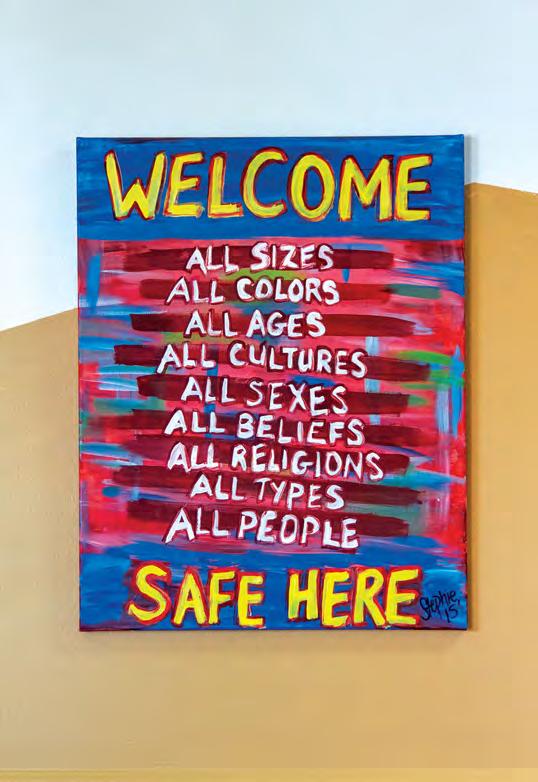
With a menu ranging from coffee to foods to desserts, The Local Buzz is the perfect place for a weekday lunch or coffee with friends. While they are only open Tuesday through Saturday from 7:30 a.m. to 2:30 p.m., they still leave you with enough time to enjoy a fresh morning espresso or mid-day sandwich and to enjoy all the friendly faces that walk in and out of their four by four shop.
“Friendly. If I had to use a word to describe the people working The Local Buzz or anybody that I have met there, it would be friendly. They just make you feel so comfortable,” Yarborough explains.
And comfort is exactly what they strive for.
 BY CAROLINE FAIREY • PHOTOS BY ALEX WYATT • DESIGN BY MEAGAN HORRES
BY CAROLINE FAIREY • PHOTOS BY ALEX WYATT • DESIGN BY MEAGAN HORRES
campaign. n. all sessions taking place in the same world with more or less the same set of characters on a specific mission or missions.
DM/GM. n. Dungeon Master or Game Master. metagaming. v. using knowledge gained outside of gameplay to influence what a character does.
nat 20. n. a critical hit or an auto-success; the highest number one can roll on a 20-sided die (d20). See also: nat 1; auto-failure.
one-shot. n. a campaign that can be completed in one session with no further expansion. retcon. v. as the GM, to retroactively alter past events or facts previously established in game. session. n. one discrete scheduled period of play.
PC. abbrev. player character. See also: NPC, or non-player character (controlled by the GM)

Before we begin—the name Dungeons & Dragons, or D&D, operates linguistically like “Jell-O” or “Band-Aid.” It stands in for the entire category of objects: gelatin dessert, adhesive bandage or tabletop roleplaying games. In reality, hundreds of different systems exist, each requiring different types of dice-rolling and math. I’ll be using D&D as a stand-in for all systems throughout this article (and it will be formatted, in my opinion, as the much more aesthetically pleasing D&D rather than, as some people spell it, DnD).
So now that we understand the referent—what is D&D?

Trying to answer this question in 1000 words or less feels like an exercise in futility; it’s like asking “what is football?” or “how do memes work?” No flat explanation of the rules will come close to teaching as easily as watching, and no insiders jargon will make sense without experiencing it yourself.
The one consistent element for D&D campaigns—whether they involve low-magic or crystals and wizards around every corner, whether they take place in 15th century Europe or Mars or Billings, Montana—is that the game is created from the combined efforts of the players and the GM. The GM creates the world, and the players make choices within it.

The difficulty ranges, not based on age, but with comfort in exuberance and risk-taking; little kids can easily play if they

possess a modicum of self-confidence. Several of the most acclaimed DMs recommend improv classes, since D&D can be seen as an elongated “yes, and.”
Jeff Arling, a senior computer science major here at UofSC, likens RPGs to any broader category of entertainment.
“A game can be any genre, with any balance of seriousness and silliness, with any general level of commitment. It’s like: who likes to watch TV? Pretty much anyone, depending on the show.”
“My favorite campaign was our first Call of Cthulu,” said Emily Sellers, a senior biochemistry major. “It took place in the 1920s; our group consisted of detectives, a private eye and a mob boss. For me, we just started our most interesting campaign yet—D&D 5e where everyone is an awakened cat. We live in an old wizard’s tower and she feeds us treats when we complete quests!”
Sellers has been active as a GM in the past. “I love storytelling, and GMing is just a different format beyond a novel or poem. I love to come up with puzzles for the players to solve or put them in difficult situations—GMing is a cool way to learn how different people think.”
Arling also GMs, using a system called 7th Sea (2e); planning a session can take anywhere from ten hours to thirty minutes, depending on how fleshed out he wants the world to be.

“Starting out, I tried to plan out every detail, almost like a choose your own adventure book or a video game, where there are a finite number of paths—but that usually either turns into chaos when players do something you don’t expect or into railroading when the players feel as though they can’t have agency.
“Now, I put most of my effort into developing the world at large and the characters within it… That way, I can do a lot of writing, which I enjoy, and I have a lot of material to pull from when players do something I wouldn’t have predicted. But it doesn’t always work—and I’ve learned not to take it too seriously when things get a little silly or off-track.”
The learning curve can feel daunting for new players (especially those dragged into it by a significant other or overeager friend). Unlike TV or movies, D&D requires a non-passive participant; unlike video games, the participant, in one way or another, is you. Your dialogue, your choices, your imagination building out the world around you. It can be overwhelming on all fronts.
“I know that a lot of what scares off people from DnD type games is the level of commitment—agreeing to do something regularly that takes hours,” Arling said. “Something that people don’t really understand is that…a ‘campaign’ can be three games over 5 months, and one-off stories with throwaway characters can often be a lot of fun.”
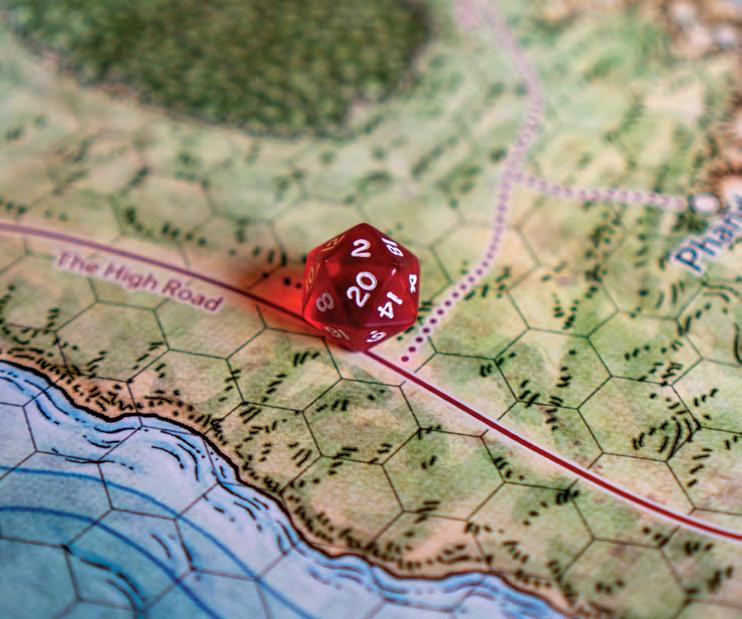
“No matter what interests you have, none are too niche for RPGing,” Sellers said. “You can make absolutely any world, character, or situation specific to you.”
Many proponents of D&D will expound on how improv strengthens self-esteem, how accomplishing a goal with friends increases closeness and collaboration; how, at the end of the day, heroes and monsters matter less than the story you’re building together. All those grand sentiments do exist—but D&D is just as much about making stupid inside jokes with your friends and completely wrecking the planned storyline.
The time was ripe for a D&D revival amid the youths. After all, the age of cool disaffectedness has passed (and good riddance, I say). Our generation is the generation of finding it super cool and sexy to genuinely, vulnerably, publicly care about things.
Our generation is the generation of finding it super cool and sexy to genuinely, vulnerably, publicly care about things.
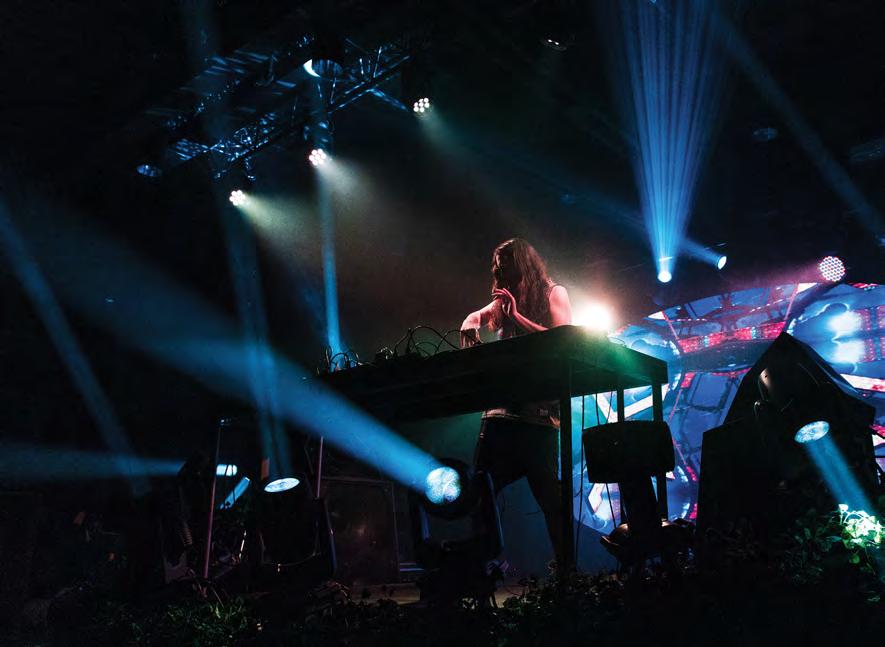

 PHOTOS BY COLEMAN ROJAHN SPACE JESUS
PHOTOS BY COLEMAN ROJAHN SPACE JESUS
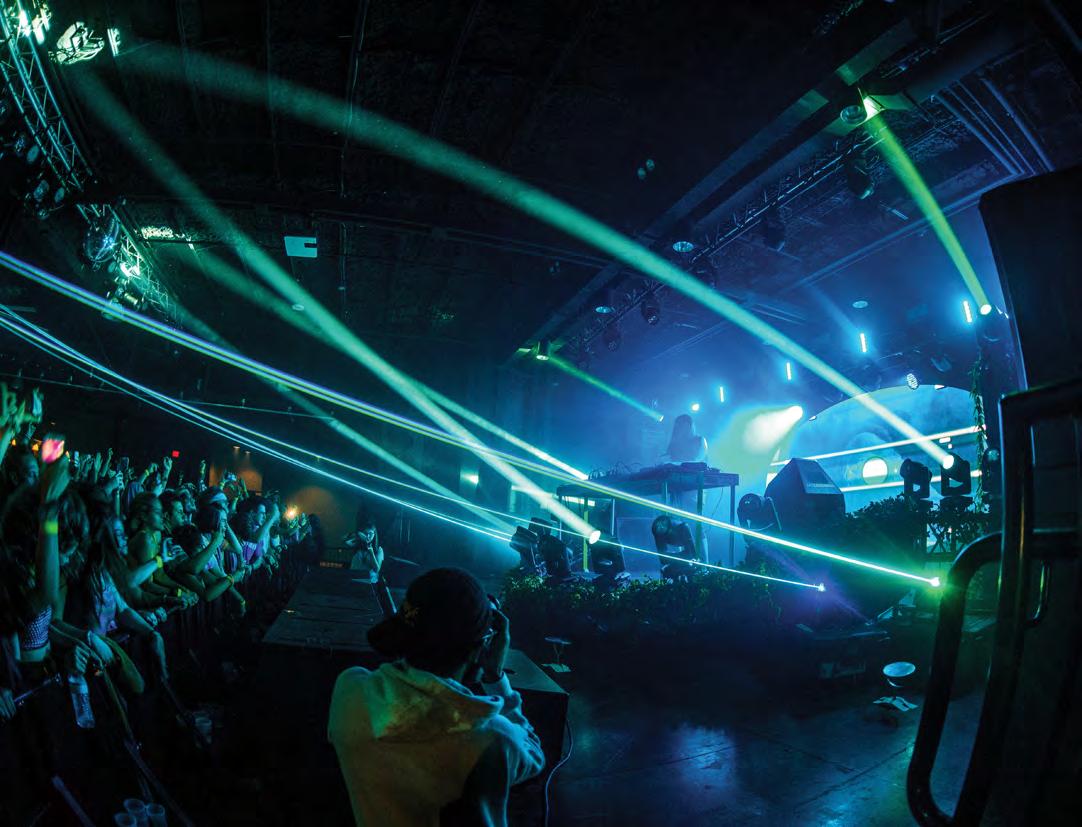






I sit here staring at a blank document, a daunting task before me. To write a story honoring a man I have never met, never held a conversation with, never even seen in the flesh, yet has had a strong impact on my life: Ansel “Jackie” Brown, my grandfather. He left this world at the hands of liver cancer well before I was even thought of, leaving me here to piece together his life and legacy. Because of this, he has always been like the star of a folktale in my life. I was always hearing about the funny, witty and thrilling things he would do. I can recall visiting distant family and family friends in Jonesville, North Carolina, where my grandfather called home, and constantly having my last name switched out for “Jackie’s grandbaby.” Whenever his name was mentioned I could see the all but subtle changes in people’s facial expressions from mundane to awestruck as they drew mental connections from me to my grandfather.
So what was so grand about my grandfather? Why did his name bear so much weight in his hometown? Why am I writing about him today? And why does any of this concern you? Well, as a student, a faculty member, a fan or an admirer of The University of South Carolina, you too have been impacted by my grandfather’s legacy. If you’ve ever gone to Williams-Brice Stadium on a sweltering hot Columbia afternoon to cheer on Gamecock football, then you’ve felt his impact. If you’ve ever camped around a TV to watch your favorite Carolina ball players, then you’ve felt his impact. If you’ve ever heard of UofSC-made NFL stars like Jadaveon Clowney, Alshon Jeffery and George Rogers, then you’ve felt his impact. If you’ve ever tried to maneuver the streets of downtown Columbia on a Saturday of a home game, then you’ve definitely felt his impact. Jackie Brown, alongside other
notable men, helped create the present-day craze of Carolina football.
My grandfather, Jackie Brown, was the first African American to letter-in and start for the varsity football team in the spring of 1970. Before him, only one other African American had ever been enrolled on a football scholarship at the University of South Carolina—Carlton Haywood in the fall of 1969. While Haywood was the first black student to be recruited for Carolina football, he redshirted in 1970 and eventually earned his varsity letter in 1971. My grandfather arrived on campus in the fall of 1969 on a baseball scholarship (also integrating the baseball team), after turning down a contract to play professional baseball for the Cincinnati Reds straight out of high school. That following spring in the midst of baseball season, he was approached by a representative of the football team and asked to try out for the team.

Having recently suffered a hamstring injury that put him behind in baseball, he took the offer and tried out. Less than a week later, he earned a spot on the team as a receiver with a full scholarship. From that moment on, my grandfather skyrocketed. He was a recurring starter and varsity letterman in 1970, 1971 and 1972. By his senior year, he was one of the top 50 prospects in the nation and was picked up by the Baltimore Colts but suffered another severe hamstring injury that led to him being released. However, he almost immediately received another threeyear contract that was more alluring than that of the Colts by the Redskins that same year. He ultimately turned down the contract to go into Christian ministry. Along with baseball and football, my grandfather also played on the junior varsity basketball team alongside Casey Manning, who was the first African American basketball player at USC in the fall of 1969 and is now a circuit court judge for the Fifth Judicial Circuit.

My grandfather accomplished so much within his first four years at USC and he went on to achieve even more in his 40 years of life. He led a life of love and peacefulness. Even in the face of prejudices and microaggressions he remained true to his “do unto others as you would have them do unto you” Christian roots. I was able to get in contact with Carlton Haywood and Casey Manning, who were dear friends to my grandfather, and they both described him as a just, level headed and “spirit-filled” man. In a cassette tape recording my dad had safely stored away among many other personal items and mementos of his father, my grandfather tells his life testimony to an audience of fellow pastors and clergymen. He speaks a lot on his personal relationships, his spiritual journey and his time leading up to and being at USC. Listening to him speak on this hour plus long tape gave a surreal glimpse into the gentle nature of my granddad. I couldn’t go without noticing the humility of his heart
and the genuineness of his character. He was a man blessed with many talents, yet his heart’s desire was so simple: to love God and to love others. My dad told me that one of the most impactful things his father would say to him growing up was, “always give your best and put God first.” As my father’s child, I can attest that this sentiment has proven itself solid in my father’s life and now in my own. It is not hard to see why my grandfather excelled so much in life. Not only was he extraordinarily talented and hardworking, but his magnetizing compassion for others drew people in. I have similarly found myself being drawn in deeper and deeper as I continue to dig not only into the history of my family lineage but also of my future alma mater. While reflecting on the past and their connections to my grandfather, Mr. Manning and Mr. Haywood painted a picture of the strong bond among the three of them that went beyond that of athletic affiliation and even of friendship. They had created a brotherhood with each other. They played beside one another, they did life together, they faced injustices together and they created lifelong memories together. Being the only three African American athletes in the entire athletics department at that time, they experienced the world in a way that only they could relate to. Although these three pioneers faced challenges such as finding a teammate willing to room with “the black guy,” or coaching staff being insensitive to their cultural expression or even having teammates intentionally cause them physical harm; their love for their sports outweighed the pressures that come with being any kind of pioneer. As the great Condoleeza Rice once said, “People who end up as ‘first’ don’t actually set out to be first. They set out to do something they love.” These guys persevered through multitudes of covert microaggressions and scattered incidents of overt discrimination, for the love of the game.
These guys persevered through multitudes of covert microaggressions and scattered incidents of overt discrimination for the love of the game.
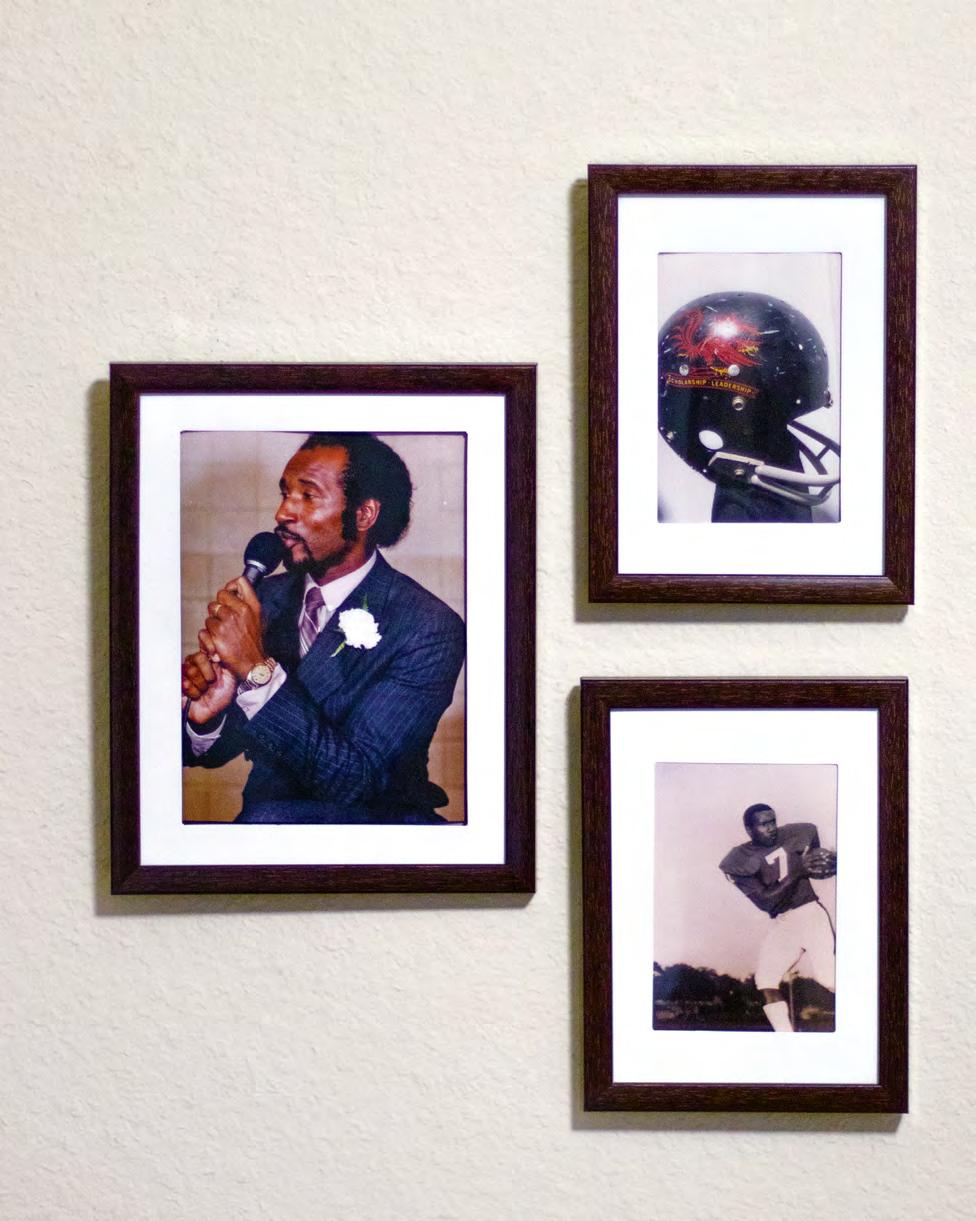
He was a man blessed with many talents, yet his heart’s desire was so simple: to love God and to love others.
So, here I am, 50 years after my grandfather was on this very campus, walking the same paths he walked, going to the same buildings he went to, sitting in the same stadium he played in and continuing the legacy he started here at USC. I find it no coincidence that I am here in his absence. Not only in his absence physically from Earth but also in the absence of remembrance of his legacy and the legacies of peers like Judge Casey Manning and Mr. Carlton Haywood. This article is much too short to give full justice and pay homage to these trailblazers and their bravery to pioneer in uncharted waters on this campus. Their willingness to be the first has paved the way for so many little black boys who dream of playing ball in WilliamsBrice Stadium or Colonial Life Arena to have their dreams fulfilled. This school’s athletic department profits millions each year off of the work of many talented and driven young black men who love the game just as my grandfather did. They give their all on those practice fields, in the weight rooms, in their classrooms and in our beloved Willy-B stadium. My grandfather didn’t live to see the current impact of his decision to turn down a professional baseball contract to play sports at this University, so I take full responsibility to pay him respect for all of his efforts. They did not go unnoticed or in vain. Although I have never once laid eyes on my grandfather

in the flesh, Ansel “Jackie” Eugene Brown will always be a jewel in my eyes and in my heart. The connection I feel to him being here on this campus is almost palpable. I can only hope to honor his memory and continue the legacy of love, hard work, dedication and perseverance that he started here in 1969.

“The connection I feel to him being here on this campus is almost palpable.
Signs of incapacitation include:
• Slurred or incoherent speech
• Lack of balance
• Confusion
• Falling asleep or unconscious
• Vomiting
Generally, incapacitation is defined as having consumed at least three standard drinks in one hour.
Consent is a clear, conscious, willing and affirmative agreement to engage in sexual activity. If someone is incapacitated, they cannot consent to any type of sexual activity.
South Carolina state law and UofSC’s Good Samaritan policy provides amnesty from minor drug and alcohol citations for people who help someone in need.
Remember, assess your safety first before intervening. If you feel uncomfortable, you can always use an indirect method of intervention like the RAVE Guardian app
Remember the D’s of bystander intervention:
Direct “They seem really out of it. Let’s help them find their friends.”
Distract “Hey, we need to go close your tab!”
Delegate Find the group they arrived with or alert a bartender or a bouncer to the situation. Do not let them leave alone or with a stranger.
UofSC offers free, accessible, inclusive and confidential support to survivors of sexual assault. To learn more about how to access these services and more, visit sc.edu/StopSexualAssault
“They look really wasted, and I don’t know the person they are leaving with...” What’s next?
 STYLED BY PARKER BLACKBURN • PHOTOS BY MARK MADDALONI, ZHANÉ BRADLEY • DESIGN BY MEREDITH PRICE
STYLED BY PARKER BLACKBURN • PHOTOS BY MARK MADDALONI, ZHANÉ BRADLEY • DESIGN BY MEREDITH PRICE




40s : Pants, Anthropologie $20| Body Suit, Express| Shoes and Belt, thrifted

50s : Shirt & Jacket, Wildflower | Skirt, Wildflower $45 | Boots, Pretty Little Thing $30 | Earings, Fabrik $12
60s : Dress, Vestique $15 | Boots, Pretty Little Thing $30
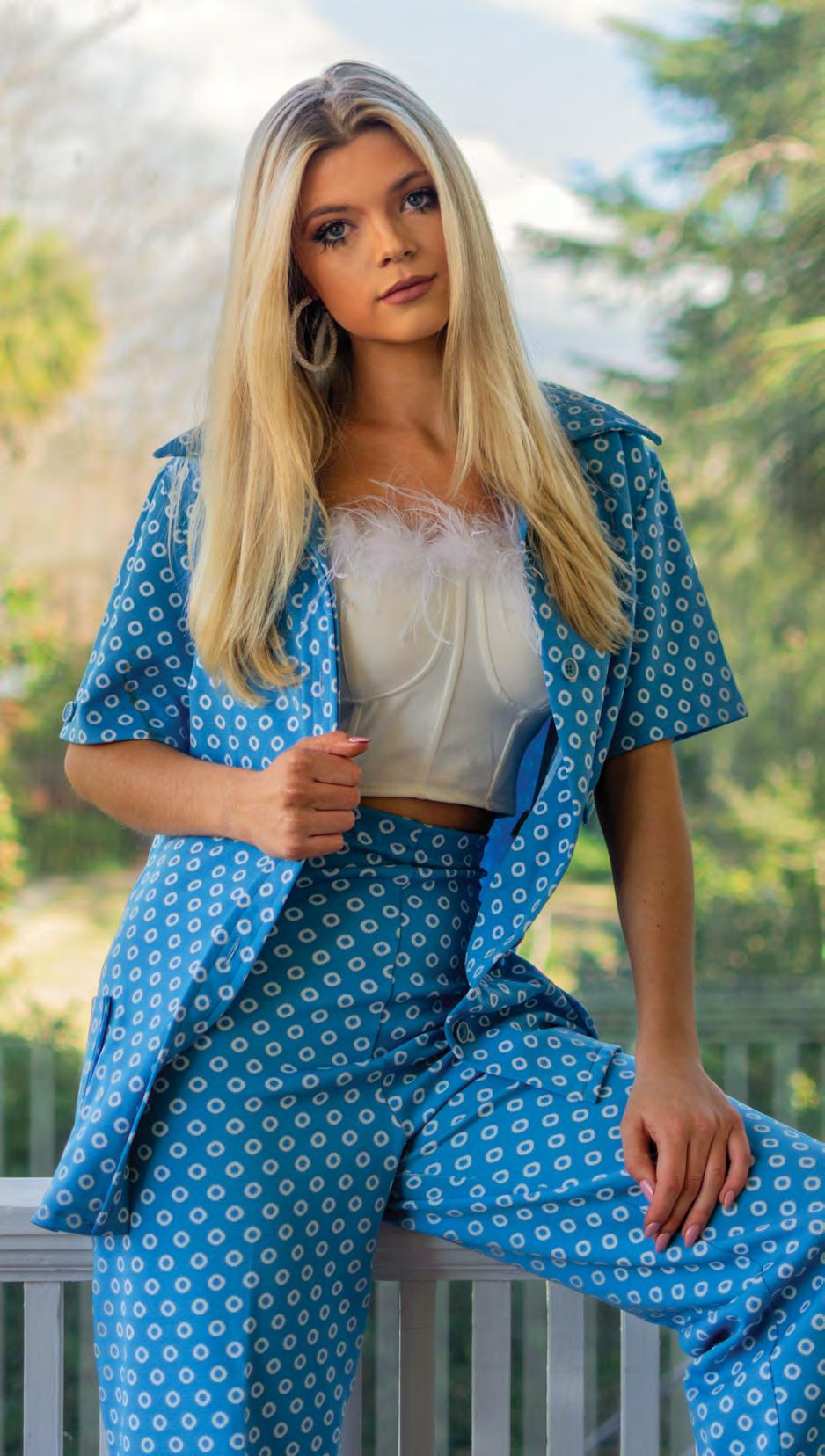 70s : Set, Sid Nancy $20 | Feather top, Boohoo $30
80s : Set, Sid Nancy $25 | Top, thrifted
70s : Set, Sid Nancy $20 | Feather top, Boohoo $30
80s : Set, Sid Nancy $25 | Top, thrifted



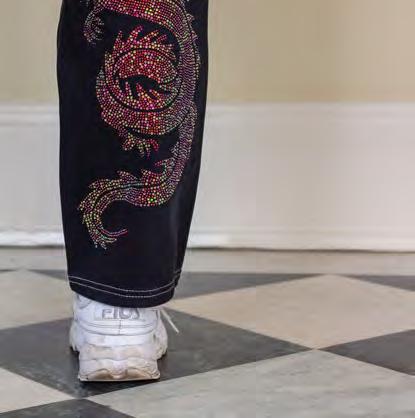



 20s : Dress, Fabrik $58 | Coat, Forever 21 $30 | Hat, Amazon
20s : Dress, Fabrik $58 | Coat, Forever 21 $30 | Hat, Amazon
“Regen” – “rain” in English – was a Dutch short documentary created by Joris Ivens and Mannus Franken in 1929. Running at about 14 minutes, it is composed of quick shots of the city and its dwellers in a rainstorm: a cluster of umbrellas seen from the top, raindrops rippling into a puddle, ant-sized people crossing streets and driving cars. What makes “Regen” special is the way it romanticizes city life, which at the time was seen as grungy and grimy. Ivens and Franken show the beauty of morning light flickering across the water, the sculpture-esque skyscrapers, and the drama of normal people going about their business. This is often called poetic documentary, meaning it is subjective and without traditional narrative, focusing on the puzzle pieces instead of the finished picture. They were snapshots of the beautiful everyday, not unlike how we use those “one second of video per day” apps nowadays. What films like “Regen” showed was that so much of the beauty of life is overlooked and seen as everyday, but that maybe paying attention to life’s “shots” could help us see the “movie.”
A few months ago, someone challenged me

A cinematic perspective on the day-to-day
BY LIZ SMITH • PHOTOS BY MARK MADDALONI • DESIGN BY MEAGAN HORRESJust as a series of shots make up a movie, a series of moments make up a life.

to live one day pretending that I was inside a movie, to see every aspect of the world around me as a meticulously crafted setting. In the filmmaking world, “mise en scène” is the arrangement of all the contributing mediums: sound, sets, lighting, costumes, etc. When I looked around as if I were merely on set, everything seemed to have distinct purpose: if someone else created the story and setting I’m walking around in, then there has to be a plot, right? This perspective is one which is especially applicable to students. There’s a reason why there are hordes of movies about college life, because it has the many ups and downs, crushed and realized dreams, messy relationships, seemingly star-crossed failures and eventual self-discovery present in nearly all plots. The “college-to-real-life” experience is a very cinematic one; if it weren’t, then “The Graduate”, “Mona Lisa Smile”, “Animal House”, “Good Will Hunting” and “22 Jump Street” wouldn’t be around.

Just as a series of shots make up a movie, a series of moments make up a life. When you see your life through a camera lens, each moment is leading up to something. Take the first scene of “Pulp Fiction”: when we meet the couple holding up the diner, then cut to a completely different storyline, we think, “what was the point of that?” a question that goes unanswered until the last few minutes.
In the same way that each prop and piece of dialogue serves a specific purpose in a film, each moment and contributing factor achieves a goal in one way or another. Just like the ups and downs of a character’s journey go towards a net positive, maybe getting rejected from your dream school leads you to discover something much better, or interning for an industry you thought you loved reveals that it isn’t the right path for you. You’re the protagonist, but also being the audience gives you the power to see the fate of these ups and downs. If all scenes, dark or comedic, make the film, then surely all of life’s moments, positive or negative, are leading to some grand finale?
So now I challenge you to put on your camera lens-glasses. Look at the fog in the morning when you walk to class, tripping on the stairs in the Humanities Classroom Building (as we all do), the stop light turning green just as you reach the intersection; see all of these things as just part of the screenplay, or some very good improvisation. If you’re anything like me, you’ll begin to see the plot of it all. Try it, starting tomorrow morning. Maybe it’ll be Oscar-worthy.

When you see your life through a camera lens, each moment is leading up to something.




 BY HALLIE HAYES • PHOTOS BY MARK MADDALONI
DESIGN BY EMILY SCHOONOVER
BY HALLIE HAYES • PHOTOS BY MARK MADDALONI
DESIGN BY EMILY SCHOONOVER


It’s 11 p.m. on a Thursday night. You have three classes and a quiz tomorrow, but instead of studying your chemistry notes, you’re studying the couple at the end of the bar who can already hardly stand on their feet. The night is young and as underage students quickly begin to pour into the bars of their choosing, you prepare yourself for what is bound to be an eventful or stressful (or eventful and stressful) night.
You are a woman. You are a student. You are a bartender. Being a student and juggling the crazy schedule that comes with being
a bartender is one thing. But imagine being a student bartender who is also female in a field that is predominantly male. Is there a difference because of gender or is everyone treated the same?
I had the chance to sit down with UofSC alumna Mackenzie Henderson, who spent her senior year as a bartender at both Village Idiot in Five Points and TLC Sports Bar before graduating this past December. Here is her take on what it’s like being a student, a woman and a bartender.

What made you decide that you wanted to work in the service industry as a bartender while in school?
“Before university I was a server and bartender at home in Augusta, Georgia. I had some friends in Columbia who were in the service industry and realized how much money I could make, so I decided to start bartending again at school.”
What was it like bartending and going to school full time?
“It’s not easy and definitely not for everyone. Your social life definitely depletes because you work during the nights you would usuallygo out or spend time with friends. This was easy for me because by my senior year most of my friends had graduated or they were in the service industry also!”
I think a big questions everyone would want an answer to is: how did you balance your schedule?
“A lot of caffeine, short naps and time management! I would look at my monthly schedule and plan out my days to spend on strictly schoolwork bi-weekly. People should definitely use their best discretion when deciding whether they have the time to bartend considering their major, because bartending hours can be very demanding. During game day shifts or busy weekend shifts there were many times I worked 12 or more hours in one shift, multiple times a weekend. Time management was seriously everything!”
Was there ever a moment where it was just too stressful and you considered walking away from it all?
“Absolutely. Especially considering I was balancing classes, an internship and two jobs; but the money is worth the stress and you can always ask to cut back on hours. During midterms I absolutely cut back on my hours and even went on pick-up at one of my jobs towards the end of the semester when final projects started creeping up.”
Did you feel the late nights impacted your school schedule at all?
“A lack of sleep and feeling behind in class can definitely affect your schooling, especially if you have to take a morning class because there’s no other option. My advice to anyone considering bartending is to not bite off more than you can chew. You can always add more hours if you feel comfortable but working in the service industry with late hours while trying to maintain your coursework as a student can seriously mess with your mental health and stress levels.”
Okay, I have to know: what are some of the craziest things you have to deal with as a bartender?
“You’ll see all kinds of physical altercations, harassment, and off the wall things! The best thing to remember is that alcohol can cause people to do things out of character, so stay firm but have some compassion. Also, always look out for people! I’ve ordered many people Ubers because their friends left them and they were distraught, kicked individuals out for harassing others and made sure the victims were safe and with friends, and taken keys from many people and gotten them alternate rides to keep the roads safe! Always treat others how you would hope to be treated if the roles were reversed.”
How was it being a female bartender in a mostly male dominant field?
“Male bartenders in Columbia do a wonderful job at making sure girl bartenders feel safe and equal. I’ve never had a negative experience with any coworkers of the opposite sex. However, customers are another story!”
Were customers ever “too pushy,” for lack of better words?
“Absolutely. I’ve had to have guys kicked

out and banned a few times. You’re pretty safe behind the bar, but there are always those instances when you have to go to the bathroom or something where guys feel they can overstep bounds. It’s pretty similar to dealing with drunk guys downtown but you’re actually safer considering you have bouncers to kick them out and you have the authority to kick people out. My best advice is to just to stand your ground and stick up for yourself within reason. You’re going to get called names and get some major attitude from all parties, but the reality is that you don’t have to serve them if they give you any issues!”
Did you notice a difference at all as a female?
“There’s honestly not much of a difference between male and female bartenders! Girls leave as many numbers and flirt just as hard with guy bartenders. The only difference is sometimes feeling less safe when a man’s advances become a bit too much.”
What would you say were your favorite and least favorite parts of bartending?

“My favorite parts were the amount of money I made and the fact that work didn’t feel like work most of the time! Your shifts are still super fun due to the atmosphere! My least favorite parts were also the fact that the atmosphere can be a bit much sometimes when people have had a bit too much to drink, and you have to bite your tongue quite a bit.”
Would you recommend bartending to other students?
“I would absolutely recommend it! It’s definitely not for everyone. You have to have a strong work ethic, self control and enjoy serving people and helping them have a fun time when they’re out. You also have to enjoy listening to a lot of people’s personal problems that they, honestly, probably shouldn’t be venting to you about. But I absolutely loved bartending! You meet so many people and make connections. The money is great and if you enjoy working and the nightlife atmosphere, Five Points is a great place to work!”



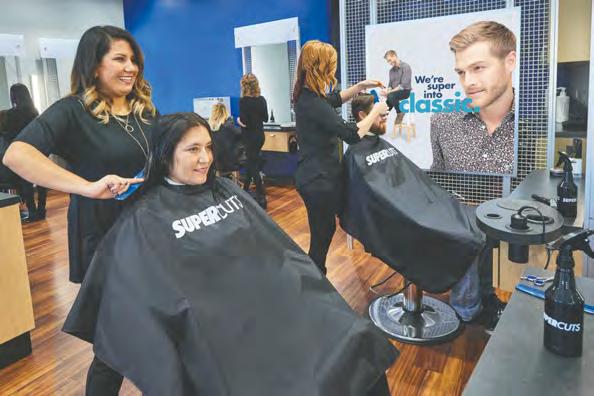








 BY HENRY BOLIN • ILLUSTRATION AND DESIGN BY ALIZAJANE HICKS
BY HENRY BOLIN • ILLUSTRATION AND DESIGN BY ALIZAJANE HICKS
With the recent advent of Disney+ , students across campus have begun to relive their childhoods. From classics like “Cinderella” to modern hits such as Inside Out, watching Disney+ feels like hopping into a time machine of joy. After talking to someone who had an eight-hour “Phineas and Ferb” marathon one day, I had a question: how much time do students spend streaming TV shows and movies on an average day? The answers are quite surprising.
What is not surprising is that college students have schedules that vary drastically. It seems like some students never leave Thomas Cooper Library, while others marathon The Office for days on end. This variation in schedule intensity is observable in the data collected from the survey. Some students averaged no time streaming during a weekday, while others averaged two, three or even seven hours a day. That’s right, seven hours of TV a day.
This response from a peer was such a significant outlier that I needed proof before accepting such an outlandish claim. Seven hours each weekday is almost a full-time job!


He pulled out his phone, went to “Screen Time” in his settings, and showed that over the past week he had spent over 50 hours on Netflix. When asked how, he explained that he almost always has a TV show on while he is doing other things. Studying? Throw on some Friends in the background. Cooking? Why not watch “The Great British Baking Show” at the same time? Incredibly, it is possible to watch seven hours of television a day and still pass classes.
While this outlier in the data is extraordinary, there is an interesting story to be told in the mundane, regular responses as well. In this survey, 90% of respondents claimed to average an episode or more of television each weekday. Though a twenty minute episode may not be a huge time commitment, it is significant that this many students are consuming visual media on a streaming platform daily. Some people will argue that this means that 90% of students are wasting at least twenty minutes of their precious time each day to mindlessly stare at a television screen. However, visual media has significantly more merit than this pessimistic view acknowledges.
The average UofSC student watches about 1.14 hours of streaming services a day.
The art of storytelling has been a part of our culture for millennia and is certainly beneficial to our society. Few people will claim that it is a waste of time to read and enjoy “The Great Gatsby”, “The Iliad”, or the “Harry Potter series”. The stories shape the reader as he or she is immersed in a new world. For example, Shakespeare’s classic plays such as “Romeo and Juliet” and “Hamlet” entertained crowds of thousands by transporting them to another reality. The stories were not only entertaining, but they were also literary masterpieces that impart wisdom about the human condition.



Streaming a movie or a show gives the viewer a glimpse into the art of storytelling that is unique to our time. Being immersed in a quality television series, such as “Breaking Bad”, allows viewers to analyze art in the form of visual media. The beauty and merit of other art forms is present on streaming services in shows and movies with well-crafted plots and complex characters.




It is clear that students are watching a lot of television, but how are they watching it? Ar they watching with an analytical eye to learn and perceive beauty? Or are they simply zoning out and gaining nothing from the experience? As you watch movies and shows, be an active viewer by analyzing and learning. Soak in the beauty of the visual art so that your time is not spent in vain.


























